Explore Articles Filed Under: Ayahuasca

Back in November of 2007, Santiago, Chile, was the host of the first — and, sadly, never repeated — Hollyweed International Psychoactive Film Festival. The festival showcased an international selection of films related to psychoactive substances of natural origin, such as marijuana, coca, and ayahuasca. The festival was sponsored by the Spanish owners of the magazine Cañamo, or Hemp. Submissions included animations, short films, feature films. and documentaries, with prizes in each category. There were entries from Brazil, Spain, Peru, Argentina, Mexico, the United States, the Netherlands, Colombia and Chile.

Aleah Long is an experienced session singer, vocal arranger, songwriter, and activist whose music has many roots: worldbeat new-age afro-pop trance-dance soul might be a good description. She makes frequent appearances at women’s and lesbian festivals with a number of groups she has helped form — her One World Inspirational Choir, and the theatrical performance and ritualist ensemble Evolution, which was inspired, she writes, “by the Great Mother, who beckons her daughters to call her names, embrace divine purpose and awaken to the creative healing powers, restoring balance and beauty to the Earth.”
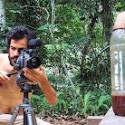
Jerónimo M. M. is a professor of interactive TV and mobile applications, as well as a consultant on Internet video, online communities, and user experience for such clients as MTV, Tele5, The Movie Channel, and Telefonica. For the past seven years he has been working on a documentary film project entitled The Ayahuasca Conversation.
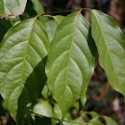
There is no doubt that many animals self-medicate with plants. A field of study known as zoopharmacognosy has grown up to investigate this phenomenon, utilizing the talents of animal behavorists, ecologists, pharmacologists, anthropologists, geochemists, and parasitologists. The field was founded in large measure by one person — primatologist Michael Huffman at Kyoto University in Japan. In 1987, in the Mahale Mountains National Park in Tanzania, Huffman observed a chimpanzee suffering from diarrhea pull a young shoot off a small tree named Vernonia amygdalina. The chimpanzee stripped off the leaves and bark with her teeth, and chewed on the branch, swallowing the juice and spitting out the fibers.
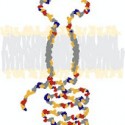
No one knows how dimethyltryptamine causes its hallucinogenic effects. Dimethyltryptamine structurally resembles the tryptamine neurotransmitter serotonin. In fact, there is sufficient conformational resemblance between these two molecules that DMT can dock comfortably at serotonin receptors in the brain. Thus research to date has concentrated on serotonin receptors as the key to understanding DMT. But a recent study by Dominique Fontanilla and her colleagues at the University of Wisconsin, published this month in the prestigious journal Science, may change the direction of that research.
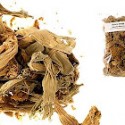
The computer magazine PC World recently published a cluster of exposé articles by staff writer Tom Spring, revealing that a number of more-or-less psychoactive plants and plant extracts — many legal and some not — are easily available online. “At a time when authorities are cracking down on illegal sale of steroids and prescription drugs online,” he writes, “substances such as kratom and Mexican prickly poppy, which pack a psychedelic and narcotic-like punch, are flourishing on the Internet.” One doctor with whom he spoke warned, “With some of these substances it’s like playing Russian routlette with your life.”
Among mestizo shamans in the Upper Amazon, the verb icarar means to sing or whistle an icaro, a magic song, over a person, object, or preparation, in order to give it power; water over which an icaro has been sung or whistled and tobacco smoke blown, for example, is called agua icarada. Another term for the same process is curar, cure; that which has been sung over is said to be curado, cured, in the sense that fish or cement is cured, ripened, made ready for use.
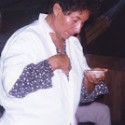
I have spoken before about my plant teacher doña María Luisa Tuesta Flores. She was born in September 1940, in the town of Lamas in the province of San Martín, and she died, the victim of sorcery, in July 2006. She had begun her healing career as an oracionista, a prayer healer, and, even after she became an ayahuasquera, her icaros, magic songs, remained inflected with the rhythms and melodies of prayers.

A while ago, I wrote about what I called the telepathy meme — the tenacious idea that ayahuasca opens telepathic communication with others in the group, or allows one to see events that are distant in time or space. This latter is, of course, consistent with the Upper Amazonian idea that ayahuasca is not itself a healer but rather a teacher, which is ingested in order to get information.
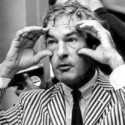
Given the current climate of moral panic and the attendant assault on Salvia divinorum — possession of which is now a felony, at last count, in thirteen states, although it is hard to keep up — I thought we might do some thinking about drugs and the law generally. Let us say that I have been arrested for possession of an illegal hallucinogen. Let us say, too, that I possess that substance, not because it is a sacrament in my church, but because I simply want to experience a hallucinatory mental state. Since I cannot rely on the Religious Freedom Restoration Act, are there any constitutional arguments available to me?

Discussing the article:
Hallucinogens in Africa